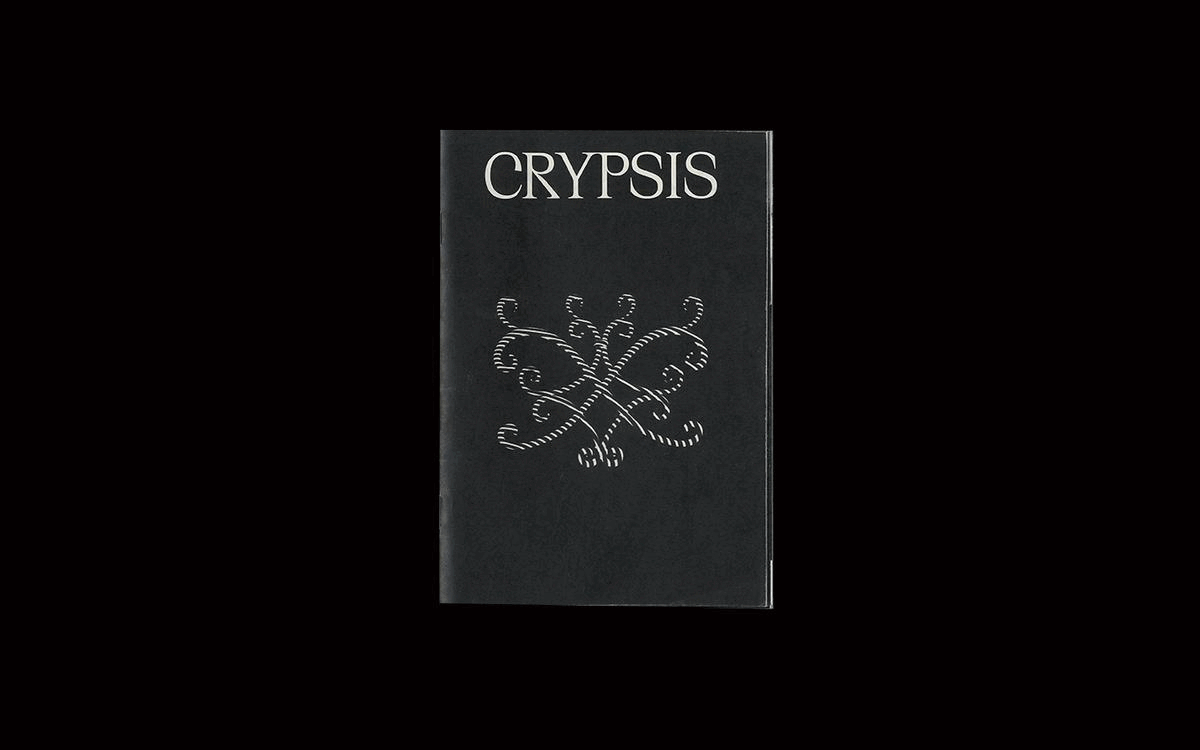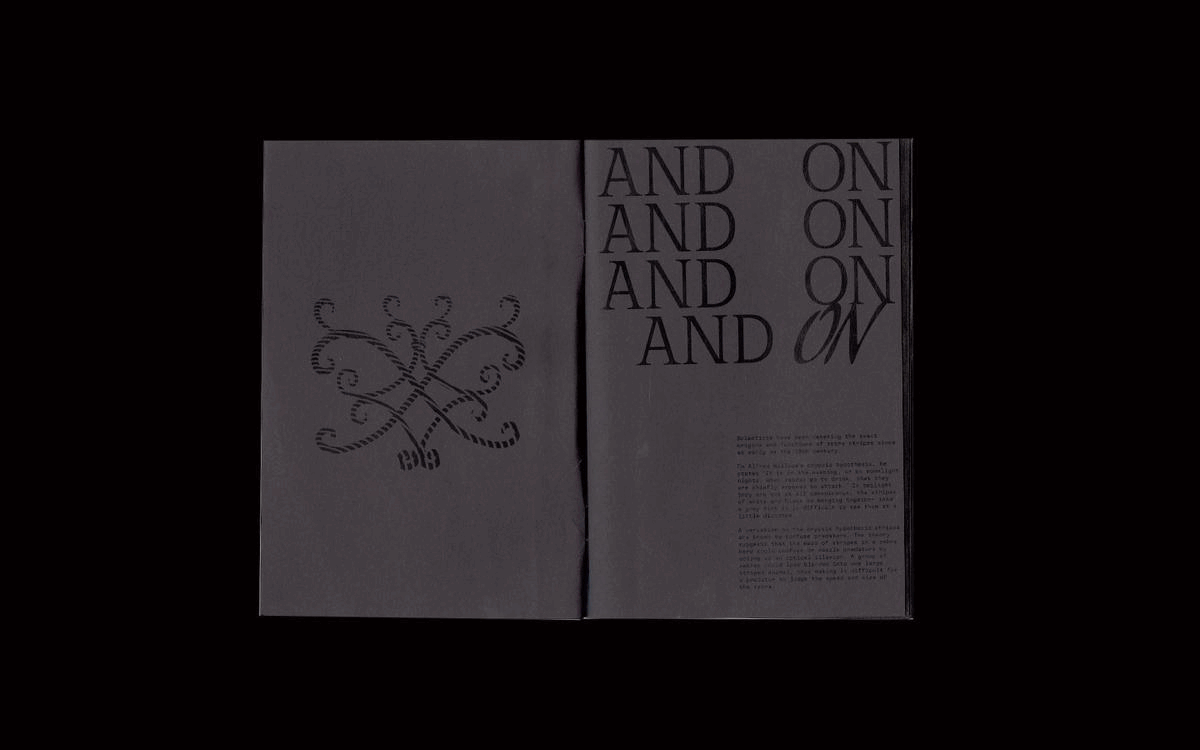![]()
CRYPSIS

[ DESCRIPTION ] Scientists have been debating the exact origins and functions of zebra stripes since as early as the 19th century. Alfred Wallace’s 1896 crypsis hypothesis states “It is in the evening, or on moonlight nights, when zebras go to drink, that they are chiefly exposed to attack. In twilight they are not at all conspicuous, the stripes of white and black so merging together into a grey tint, it is difficult to see them at a distance.”
A variation on the crypsis hypothesis determines that stripes are known to confuse predators. This theory suggests that the mass of stripes in a zebra herd could confuse or dazzle predators by acting as an optical illusion. A group of zebras could look blended into one large striped animal, thus making it difficult for a predator to judge the speed and size of the zebra.
This experimental zine explores stripes and pattern making. How can stripes be mapped onto simple 2D and 3D shapes to camouflage their form? Designed 2 versions, one is black on white paper and the other is black ink on black paper printed on an inket printer for tonal studies.
(INFO)
CREATED FOR NEWLY FORMED, ADVISED BY CHRISTOPHER AND KATHLEEN SLEBODA.
6x9”, 2 EDITIONS
CREATED FOR NEWLY FORMED, ADVISED BY CHRISTOPHER AND KATHLEEN SLEBODA.
6x9”, 2 EDITIONS
(LOCATION)
PROVIDENCE, RI.
PROVIDENCE, RI.
(DATE)
FALL 2022
FALL 2022
(SERVICES)
EDITORIAL DESIGN
EDITORIAL DESIGN









































